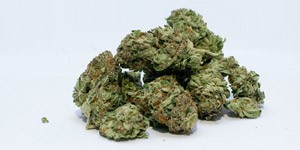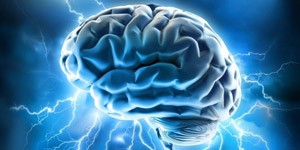By Sandra Carrillo

Physician and Surgeon at CES University (Medellín, Colombia). Teacher of various medical cannabis diploma courses and certifications in Colombia, Ecuador, Mexico, Brazil and the USA.
Co-creator of the Certification in the Prescription of Cannabinoids of the Colombian Medical College Alliance / ASOMEDCCAM. Co-founder and president of the Asociación Médica Colombiana de Cannabis Medicinal (Colombian Medical Association of Medical Cannabis) and Medical Director of Medicann IPS Clínicas Cannabis Medicinal (Medicinal Cannabis Clinics - Colombia).
She is a member of the Scientific Committee of the Colombian Observatory of Medical Cannabis CES and of the Medical Cannabis Observatory of Portugal, ambassador of the UK Medical Cannabis Clinicians' Society and member of the Review Board of the American Journal of Endocannabinoid Medicine.
International lecturer and member of all the main cannabinoid research societies.
The cannabis plant has active compounds called cannabinoids, which have received significant attention for their potential therapeutic benefits, as well as for their recreational use.
Now that cannabis is increasingly legalised for medical and recreational purposes in different countries of the world, it is of utmost importance to understand the toxicity and side effects of cannabinoids.
We will explore the various toxicological aspects and side effects associated with cannabinoids, mainly Delta 9-tetrahydrocannabinol (THC) and Cannabidiol (CBD), the two most studied compounds of the cannabis plant.
In 2020 the Annals of Internal Medicine of the American College of Physicians reported that in the last 2 decades there have been more visits to the emergency department for side effects caused by cannabis use, because in the last 20 years concentrations of THC in the plant have increased from 4% to 20%.
The effects of cannabis are mostly caused by the activity of cannabinoids on the different endogenous cannabinoid receptors such as CB1 and CB2, which are found in the central and peripheral nervous system.
THC and CBD are metabolised by a variety of cytochrome P450 enzymes.
- THC and CBD can increase or decrease the concentrations of medicines.
- Substances can alter the bioavailability of THC and CBD.
- Many interactions between drugs are only known in theory.
- Prescribers must remain aware of the potential for interactions.
Acute intoxication by cannabis and cannabis-derived products, used via administration routes such as vaporisers and edibles, is largely caused by THC, a cannabinoid with psychotropic properties, which can produce relaxation, anxiolysis, euphoria, altered perception, altered awareness of external stimuli and increased appetite, among other effects.
These symptoms usually intensify after 1 to 2 hours of use, depending on the route of administration used, coinciding with peak THC levels in plasma.
THC. Negative side effects:
- The most common side effects reported were dizziness and fatigue, which were normally tolerated by the patients. Other reported effects were impaired coordination and motor skills, including driving.
- Cognitive effects: Impaired short-term memory, attention and executive function, anterograde memory loss and learning difficulties. These effects are generally dosage-dependent and are more pronounced in inexperienced users.
- Anxiety and psychosis, including hallucinations and paranoia. High doses of THC can lead to acute anxiety, paranoia and, in some cases, panic attacks. These are less frequent effects, mostly dosage-dependent.
- Frequent users tend to develop tolerance to many of these symptoms, especially with respect to cognitive disorders.
- Cardiovascular effects: THC can cause tachycardia (increased heart rate), worsen arrhythmias, cause hypotension and, in susceptible individuals, can precipitate acute coronary syndromes.
Hyperemesis syndrome due to cannabinoid use:
This is one of the adverse effects that has become more recognised in recent years, due to increasing rates of intensive use of cannabis with high THC content.
Patients may report nausea and uncontrollable vomiting as the main symptoms, as well as abdominal pain lasting several days.
These symptoms, patients report, may improve temporarily with repeated hot showers.
Short-term treatment is often based on stopping cannabis use. If symptoms persist, pharmacological treatment such as sedative hypnotics (e.g. Lorazepam) may be used. If necessary, antipsychotics coupled with an antiemetic (e.g. promethazine or ondansetron) may be used for breakthrough nausea, together with the other treatments described.
Acute THC Toxicity
The acute toxicity of THC is relatively low compared to many other psychoactive substances. The risk of fatal overdose from cannabis use is extremely small compared to the risks of overdose from opioids and other stimulants.
Using LD50 values in oral administration in rodents, it has been extrapolated that the equivalent lethal dose of THC in humans is > 15,000 mg.
Long-Term Side Effects (Chronic Use):
Chronic use of THC, particularly in high doses, can lead to more persistent side effects and potential health risks:
- Cognitive deficits: Prolonged high-dose THC use can lead to persistent cognitive deficits, particularly in adolescents and young adults, affecting learning, memory and executive functions.
- Mental health disorders: Chronic THC use has been associated with an increased risk of developing psychiatric conditions, including depression, anxiety disorders and schizophrenia, especially in individuals predisposed to these conditions.
- Development of problem use: Regular use of cannabis, mainly of high concentrations of THC, can lead to dependence and addiction, characterised by cravings, withdrawal symptoms and the continuation of use even in the presence of negative effects. The prevalence of the development of problem use among cannabis users is estimated to be around 9-10%.
- Respiratory problems: Cannabis smoking, as with tobacco, can cause chronic bronchitis and other respiratory problems due to the inhalation of burnt plant material and associated toxins.
According to an article published in American Scientist 2006 on the toxicity of recreational drugs, psilocybin and cannabis are among the least physiologically toxic substances, requiring 100 to 1,000 times the effective dose to cause death.
CBD. Negative side effects:
CBD, on the other hand, has a lower affinity for CB1 and CB2 receptors, but influences the endocannabinoid system in several ways, binding to different receptors and ion channels, as well as affecting mechanisms such as the degradation of anandamide through inhibition of the FAAH (fatty acid amide hydrolase) enzyme, which breaks down anandamide, an endogenous cannabinoid.
CBD is generally well tolerated and has a good safety profile.
Acute side effects are usually mild and include:
- Drowsiness and sedation: High doses of CBD can cause drowsiness, which can be beneficial in treating conditions such as insomnia, but problematic in case of activities that require full alertness.
- Gastrointestinal problems: Some users report nausea, diarrhoea and changes in appetite and weight.
- Pharmacological interactions: CBD can interact with several drugs by inhibiting the cytochrome P450 enzyme system, potentially altering the metabolism of drugs such as warfarin and certain anticonvulsants, among many others, as this is a molecule that acts on multiple receptors throughout the human body.
CBD LD50 values after single intravenous doses of CBD were 50 mg/kg in mice. There were no deaths in rats and monkeys receiving daily oral doses of 25-300 mg/kg CBD for 90 days.
In human studies, CBD administered in single oral doses of 15-160 mg, inhaled at a dose of 0.15 mg/kg or injected intravenously in doses of 5-30 mg produced no adverse effects.
In a study by Devinsky et al., the mean CBD dose at 12 weeks was 22.9 mg/kg in patients with treatment-resistant epilepsy, with 48 patients receiving up to 50 mg/kg/day. CBD increased over a 12-week period. Adverse events were reported in 79% of patients, but most were mild to moderate and transient.
In this study, serious adverse events possibly related to CBD use were recorded in 20 patients (12%) and included status epilepticus, diarrhoea, pneumonia and weight loss.
The long-term use of CBD is still being extensively researched, but current data suggests that it is relatively safe.
High doses of CBD have been shown to cause elevated liver enzymes in some people, so periodic liver enzyme measurements should be taken to prevent the onset of liver toxicity.
This effect appears to be dose-dependent and may be exacerbated by the interaction with other hepatotoxic drugs.
Special Populations and Vulnerabilities
Some populations may be particularly vulnerable to the side effects of cannabinoids:
- Adolescents: The developing brain is susceptible to the effects of THC. Cannabis use in adolescents has been linked to impaired brain development and an increased risk of developing mental health disorders.
- Pregnant and breastfeeding women: THC can cross the placenta and be found in breast milk, potentially affecting foetal and neonatal development. Potential risks include low birth weight and developmental delays.
- Individuals with pre-existing mental health conditions: People with a history of mental health disorders have an increased risk of worsening symptoms with THC use. CBD may, however, have potential therapeutic effects for some psychiatric conditions, although more research is needed.
Conclusions
Cannabinoids, notably THC and CBD, have a range of important beneficial therapeutic effects, but it should be noted that they may also cause adverse effects.
THC has a higher potential for acute and chronic toxicity, and uncontrolled use can lead to cognitive impairment, mental health problems and dependence, while CBD is generally safer but is not without potential side effects, such as drowsiness, gastrointestinal problems and interactions with other medications.
The vast majority of severe adverse effects attributed to THC have been found in people using cannabis in the context of adult use, i.e. related to high doses of THC without medical monitoring. Adverse effects are easier to prevent and control when the use of cannabinoids is done in the context of medicinal use, and therefore under medical prescription, with appropriate dose titration, personalised selection of chemotypes specific to the patients' conditions, and medical follow-up.
The long-term safety of both cannabinoids, particularly in special populations such as adolescents and pregnant women, requires careful consideration and further research.
As the use of cannabis becomes more common, both for recreational and medicinal purposes, a thorough understanding of the toxicity and side effects of cannabinoids is essential for informed decision-making by consumers and health care providers.
Continued research and education will be essential to maximise the therapeutic benefits of cannabinoids while minimising their potential risks.
References:
1.Annals of Internal Medicine, American College of Physicians Arthur Robin Williams, MD, MBE Kevin P. Hill, MD, MHS, 2020.
2. Grotenhermen, F. (2003). Pharmacokinetics and pharmacodynamics of cannabinoids. Clinical Pharmacokinetics, 42(4), 327-360.
3.Health Canada. "Information for Health Care Professionals: Cannabis (Marihuana, Marijuana) and the Cannabinoids." Education and awareness;guidance. aem, October 12, 2018
4. Gable, R. S. (2004). Comparison of acute lethal toxicity of commonly abused psychoactive substances. Addiction, 99(6), 686-696.
5. Hartman, R. L., & Huestis, M. A. (2013). Cannabis effects on driving skills. Clinical Chemistry, 59(3), 478-492.
6.Thompson GR, Rosenkrantz H, Schaeppi UH, Braude MC. Comparison of acute oral toxicity of cannabinoids in rats, dogs and monkeys. Toxicol Appl Pharmacol. 1973;25(3):363-372. doi:10.1016/0041-008x(73)90310-4.
7. Crean, R. D., Crane, N. A., & Mason, B. J. (2011). An evidence-based review of acute and long-term effects of cannabis use on executive cognitive functions. Journal of Addiction Medicine, 5(1), 1-8.
8. Freeman, D., Dunn, G., Murray, R. M., Evans, N., Lister, R., Antley, A., ... & Morrison, P. D. (2015). How cannabis causes paranoia: using the intravenous administration of Δ9-tetrahydrocannabinol (THC) to identify fundamental cognitive mechanisms leading to paranoia. Schizophrenia Bulletin, 41(2), 391-399.
9. Jouanjus, E., Leymarie, F., Tubery, M., & Lapeyre-Mestre, M. (2011). Cannabis-related hospitalizations: unexpected serious events identified through hospital databases. British Journal of Clinical Pharmacology, 71(5), 758-765.
10. https://www.researchgate.net/publication/250968822_The_Toxicity_of_Recreational_Drugs
11. Bergamaschi, M. M., Queiroz, R. H., Chagas, M. H., De Oliveira, D. C., De Martinis, B. S., Kapczinski, F., ... & Crippa, J. A. (2011). Cannabidiol reduces the anxiety induced by simulated public speaking in treatment-naïve social phobia patients. Neuropsychopharmacology, 36(6), 1219-1226.
12. Devinsky, O., Cross, J. H., Wright, S., Trial, G. W. E. T. C. S. G. C. S. G. E. P.I. L. E. P. S. Y., & Patel, A. D. (2017). Cannabidiol in Dravet syndrome study group. Cannabidiol in patients with treatment-resistant epilepsy: an open-label interventional trial. The Lancet Neurology, 16(6), 431-440.
13. Stout, S. M., & Cimino, N. M. (2014). Exogenous cannabinoids as substrates, inhibitors, and inducers of human drug metabolizing enzymes: a systematic review. Drug Metabolism Reviews, 46(1), 86-95.
14. Meier, M. H., Caspi, A., Ambler, A., Harrington, H., Houts, R., Keefe, R. S., ... & Moffitt, T. E. (2012). Persistent cannabis users show neuropsychological decline from childhood to midlife—proceedings of the National Academy of Sciences, 109(40), E2657-E2664.
15. Lev-Ran, S., Roerecke, M., Le Foll, B., George, T. P., McKenzie, K., & Rehm, J. (2014). The association between cannabis use and depression: a systematic review and meta-analysis of longitudinal studies. Psychological Medicine, 44(4), 797-810.
16. Volkow, N. D., Baler, R. D., Compton, W. M., & Weiss, S. R. B. (2014). Adverse health effects of marijuana use. New England Journal of Medicine, 370(23), 2219-2227.
17. Huestis, M. A., Henningfield, J. E., & Cone, E. J. (1992). Blood cannabinoids. II: Models for the prediction of the time of marijuana exposure from plasma concentrations of Δ9-tetrahydrocannabinol (THC) and its metabolites. Journal of Analytical Toxicology, 16(5), 283-290.
18. Grotenhermen, F. (2004). Pharmacology of cannabinoids. Neuroendocrinology Letters, 25(1-2),
19. Bonn-Miller, M. O., Loflin, M. J., Thomas, B. F., Marcu, J. P., Hyke, T., & Vandrey, R. (2017). Labeling accuracy of cannabidiol extracts sold online. JAMA, 318(17), 1708-1709.
20. https://www.medicines.org.uk/emc/product/602/smpc#about-medicine


